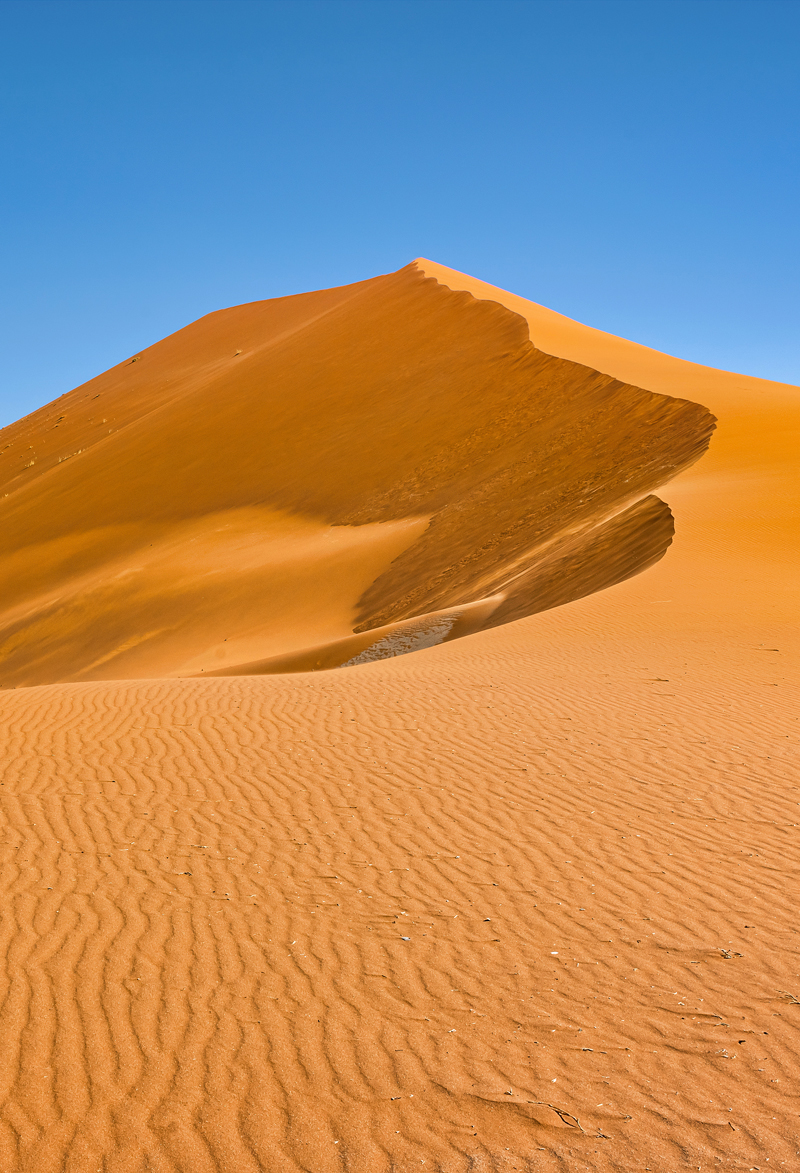Optical illusions occur when the human eye perceives things differently than they actually are. But they aren’t just an abstract concept — there are plenty of examples found in nature. From a surreal salt flat that’s almost as big as the state of Connecticut to a mind-boggling waterfall seemingly made from fire, these are five of the most unreal looking optical illusions you can see in real life.
Firefall – Yosemite National Park, California
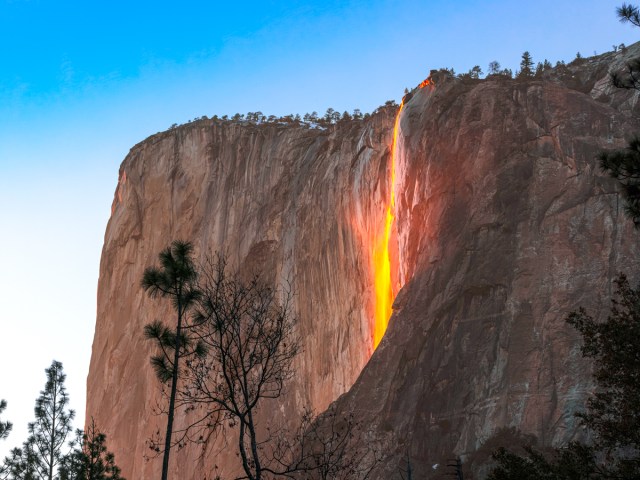
For most of the year, Horsetail Fall is just a small waterfall on the famous El Capitan rock formation in Yosemite National Park. However, something magical happens to the waterfall at sunset towards the end of February. During this time, the waterfall looks as if it’s on fire, which has earned it the nickname “Firefall.” The reflection of the sun hitting the falling water at just the right angle is what makes it look like lava pouring over the edge of the mountain.
It’s not only the time of day and the time of year that you’ll need to get right, however. There is an element of luck if you want to see this optical illusion in its full glory. You’ll need Mother Nature to cooperate — if there is even a little bit of cloud cover, it can ruin your chances of seeing the epic “Firefall.” But visitors remain undaunted: The optical illusion is now so popular that it has forced the National Park Service to implement new rules. There are now limited areas for viewing in an effort to reduce traffic jams.
Rakotzbrücke – Germany
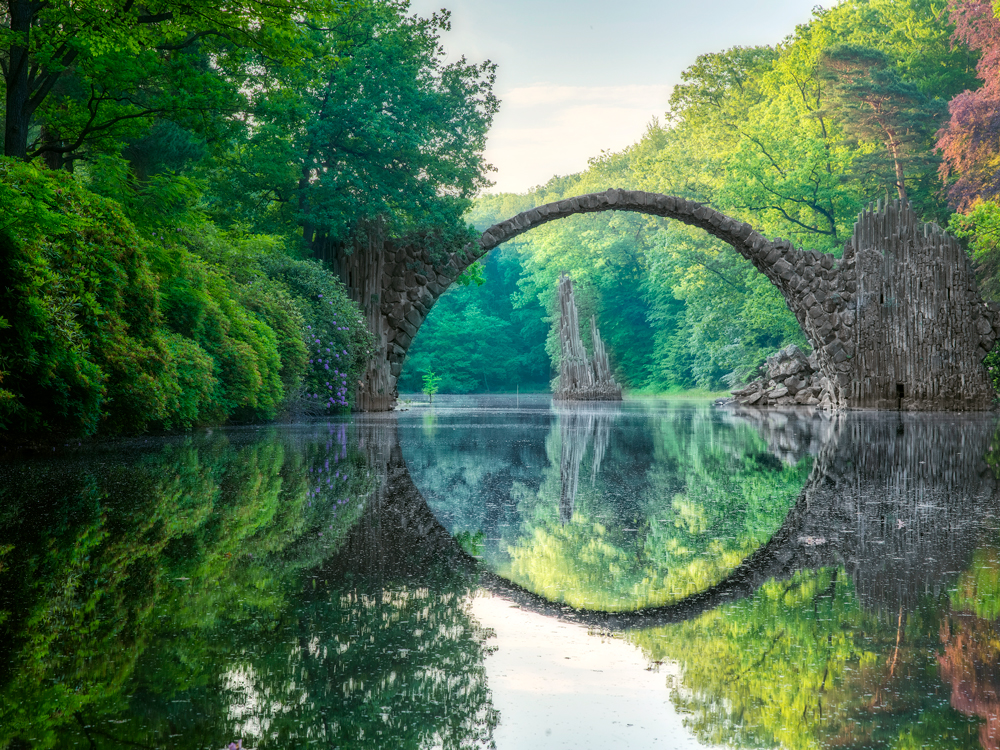
Rakotzbrücke is known to many as the “Devil’s Bridge,” but don’t let that moniker deter you. The forest-shrouded, 19th-century stone bridge and its reflection on the water below creates one of the most tranquil scenes in all of Europe. Located in Gablenz, Germany — about a two-hour drive from Berlin — the delicate footbridge features thin spires at both ends, which arch up from the ground in a near-perfect semicircle. But most park-goers are hoping to visit on a clear day with calm winds, when they can witness the incredible illusion of a full circle made with the reflective lakewater below.
The bridge was commissioned in 1860 by a local knight, Friedrich Hermann Rötschke, as the centerpiece of the Azalea and Rhododendron Park Kromlau, a 200-acre park he created and financed. Rakotzbrücke is not the only Devil’s Bridge in Europe, either — the name was given to several bridges with local legends behind them. In the case of Rakotzbrücke, it’s said that the bridge’s designer consulted with the devil when coming up with its gravity-defying shape. Though crossing the bridge is no longer permitted to preserve the structure, thousands still pay a visit each year to capture a photograph of this mythical wonder.
Salar de Uyuni – Bolivia
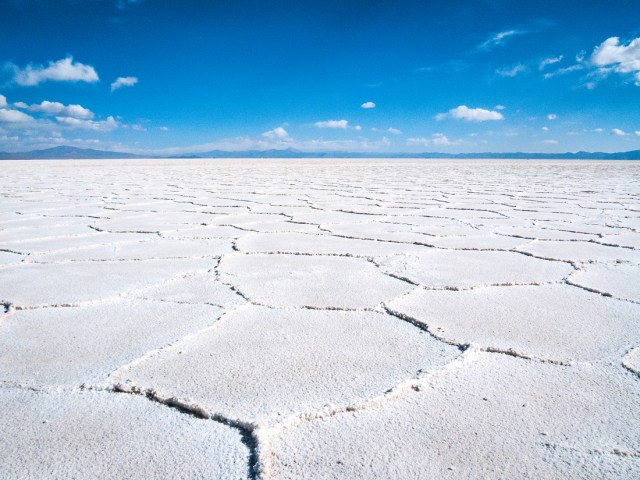
The largest salt flat in the world covers more than 4,000 square miles of Bolivia’s windswept western landscape — which, incredibly, is almost the size of the state of Connecticut. Resembling a shattered slab of ice, Salar de Uyuni (Uyuni Salt Flat) formed when a lake dried up between 10,000 and 25,000 years ago. The Indigenous Aymara peoples have long gathered cooking salt from here, and today, the sprawling natural wonder, located 12,000 feet above sea level, serves as a major source of salt for the entire country. Uyuni contains vast amounts of untapped lithium beneath the surface, the result of prehistoric volcanic eruptions.
It’s also increasingly popular with visitors, though it can be challenging to get to. Many of them come to experience the Palacio de Sal (Salt Palace), the world’s first salt hotel. Located on the edge of the salt flat, the lodging is built entirely of salt. The best time to appreciate the salt flat in all its glory is usually between December and April, the season when Salar de Uyuni collects rainwater to create an astonishing mirrored reflection on its surface.
Underwater Waterfall – Mauritius
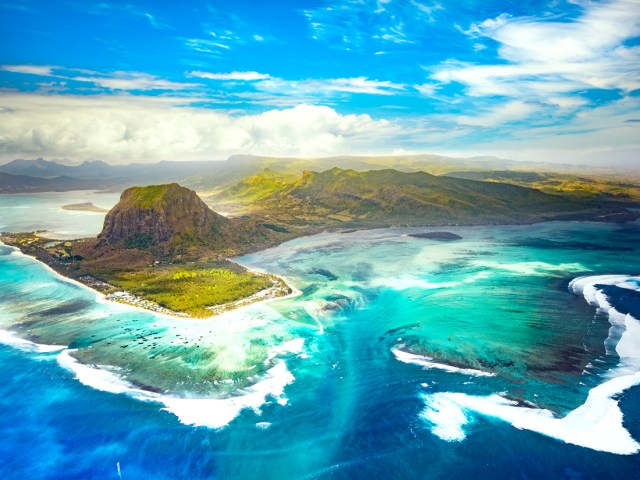
A tropical island nation about 700 miles east of Madagascar, Mauritius is geographically isolated enough to merit its own time zone — and a trove of geological wonders found nowhere else. Within the past decade, mineral samples estimated to be 3 billion years old have been extracted from underneath the island’s beaches. Researchers believe that an ancient, lost continent called Mauritia compressed and sunk into the Indian Ocean, a disruption partly responsible for the volcano that generated this island.
Mauritius sits on an ocean shelf sprawling about 500 feet below sea level — and there’s a steep 2.5-mile drop to the ocean floor from the shelf’s edge. From above, you’ll see what resembles an underwater waterfall off the island’s southwest coast. In reality, currents are forcing sand from the beaches and ocean shelf to greater depths. Although there’s technically no waterfall, the churning sediment creates a glistening medley of blues, greens, and whites. The best way to experience the phenomenon is on one of the many helicopter tours that fly above the climactic seascape, and also provide a bird’s-eye view of nearby Black River Gorges National Park and Le Morne Brabant Mountain.
Sossusvlei – Namibia
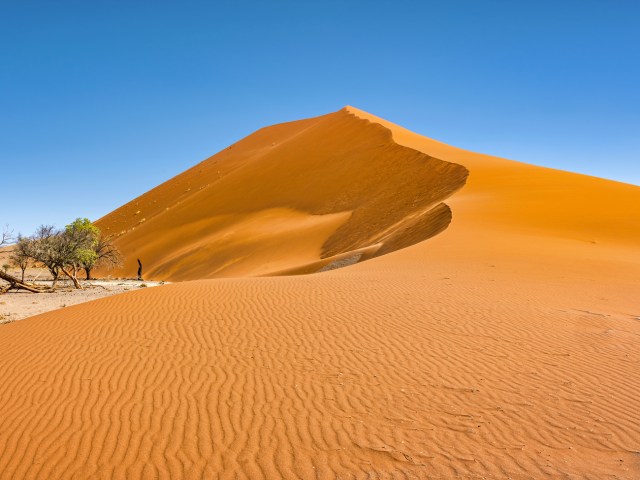
Southwestern Namibia is home to some of the world’s tallest sand dunes — windswept, rust-colored giants that tower as high as 1,200 feet above the scorched earth of the Namib Desert. The dunes are part of the planet’s oldest desert — estimated to date back 55 million years — and wrap around a 12,000-square-mile salt and clay pan known as Sossusvlei. Translating to “dead-end marsh,” Sossusvlei sprawls at the furthest reaches of the Tsauchab River, where the dunes come together to stop its flow just 37 miles short of the Atlantic Ocean.
Part of what makes the view so remarkable is that the empty pan accentuates the height of the sand dunes surrounding it. Area winds blow from every direction, causing the undulating dunes to shift and erase ostrich, springbok, and hyena footprints, while concealing thirsty camel thorn tree roots that extend hundreds of feet below ground. The most popular dune to visit is Dune 45, which stands roughly 278 feet tall and can be climbed in an hour, but an unforgettable way to take in the incredible scenery is a sunrise hot air balloon ride.
More from our network
Daily Passport is part of Inbox Studio, which publishes content that uplifts, informs, and inspires.






